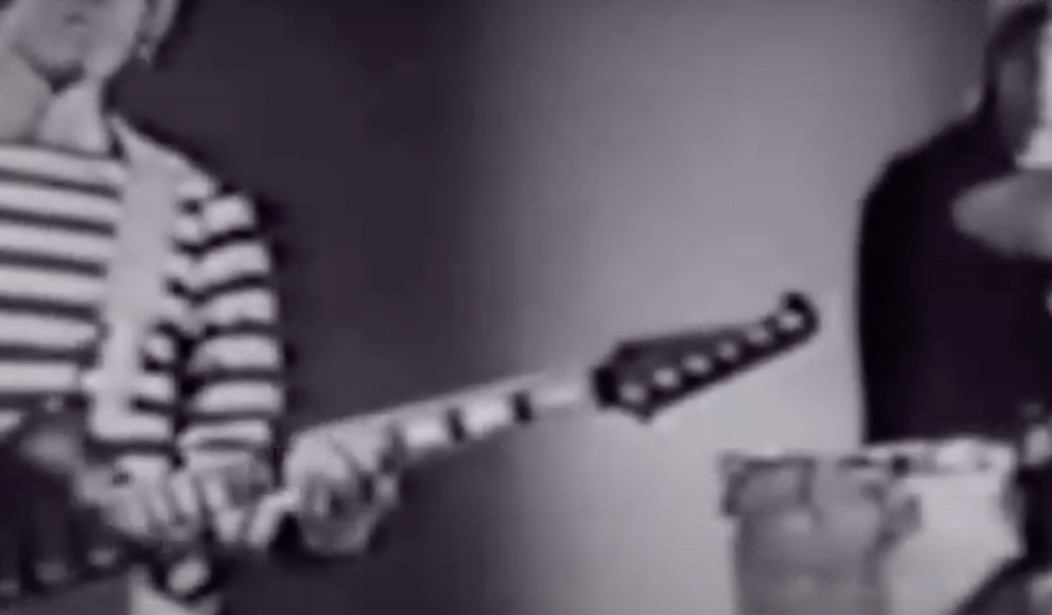I only saw the Rolling Stones four times, but each time was a milestone concert. Together they reflect the long and winding road the band embarked upon in the early sixties, the challenges faced and tragedies it weathered along the way, and the achievements of what many consider the greatest rock band of all time notched into rock history.
Throughout their near sixty-year run, one thing never changed: Charlie Watts always sat behind the drum kit. Watts passed away this week at age 80.
Life was good in 1966 for a fifteen-year-old boy with tickets to the Rolling Stones at Honolulu International Center Arena. The hoopla surrounding the concert had been drummed up by local media for weeks–there wasn’t much else going on in the sleepy islands–starting with a column-inch announcement on the Star-Bulletin’s lifestyle page, then jumping to a piece about a group of female teenyboppers denied when they attempted an overnight sleepover on the concrete in front of the HIC ticket booths.
The show itself—the only time I saw star-crossed guitarist Brian Jones—was a fast-paced blur of greatest hits contained within a whirlwind of constant screaming. I have a faded color Polaroid of the group onstage, taken after I left my seat and tried to get closer to the stage. A burly Pacific Islander police officer tracked my approach, and made clear that I shouldn’t push my luck. The Star-Bulletin was abuzz the morning after, with no less than an expanded front-page photo of shell-shocked front-row fans.
Unbelievably, somebody taped that concert, and thanks to the wonders of the internet you can hear it in its entirety. Here, for posterity, blended with stock footage, is recorded the awesome talent and flair of Charlie Watts on drums.
December 1969, and the concert contrast could not have been starker. The second time I saw the Stones was at the ill-fated free concert at the Altamont Speedway, an experience I wrote about in a previous column. The only thing I’ll add at this juncture was that an ashen-faced Charlie Watts kept drumming throughout the debacle.
My third time for the Stones marked their reinvigorating return to form on the storied 1972 tour. On June 8 at San Francisco’s Winterland Ballroom, the group stormed through the best of the four concerts I attended. After an uneasy period trying to fill Brian Jones’s shoes, guitar virtuoso Mick Taylor had come into his own as a Stone; his contributions preceding the tour on the albums Sticky Fingers and Exile On Main Street are considerable.
What I remember about that night is that I got in line early and, since it was general admission, was able to get very close to the stage. Gone was the screaming mania of the sixties and the deathly pall of Altamont. I can fully corroborate rock critic Robert Christgau’s quote about the tour that “the mood of the shows was friendly, with Jagger undercutting his fabled demonism by playing the clown, the village idiot, the marionette.”
The performance of the band was never better. They opened with the celebratory (and quite politically incorrect for our times) “Brown Sugar.” “Gimmie Shelter” rolled forth from its plaintive opening notes into a surging behemoth. Jagger enacted an extended light-bondage scene to the strains of “Midnight Rambler,” and they closed by dropping “Jumpin Jack Flash” and “Street Fighting Man” into the laps of the thralled, pot-intoxicated sell-out crowd.
This clip from a Texas stop captures the quality of the band at this time. Note Watts’ drumming, the powerhouse beat, the perfectly timed cymbal crashes, and driving fills that never stall the forward propulsion.
Cut to 1989, seventeen years later. I’d attended hundreds of rock concerts during that interim, but my interests had expanded from the original British Invasion heroes to include all forms of heavy metal and hard rock. I just never got back to see the Rolling Stones until…
…the Steel Wheels Tour, a November 5 date announced for the Oakland Coliseum. A bunch of my aging rock-fan friends got together, said “why the hell not?” and bought a cluster of tickets before the show sold out.
We weren’t that close, and Oakland security cops ensured that everyone remained in their seats. Still, it was a great show, quite an extravaganza, with a gargantuan stage set and giant inflatable women burgeoning out to dwarf the band. Ronnie Wood had come aboard after Taylor’s departure, and it would be the last time bassist Bill Wyman, whose pulsating skills combined with Watt’s drumming to complete one of the all-time best rhythm sections in rock, would tour with the band.
The Stones were always big business, but they were outsized business on the threshold of the nineties. Ticket receipts for the two Coliseum shows totaled nearly $3.5 million.
This following clip captures what my friends and I witnessed from about forty rows back. You don’t see much of Watts here, but no bulls&%t, he’s back there, age 49, holding down a killer beat, rocking a groove for the ages.
Won’t say RIP, although of course, we mean that. Rather say, about a drummer I loved,
Bye Charlie.
Author’s note: As this piece was submitted it was announced that the Rolling Stones’ upcoming No Filter Tour, which kicks off on September 26 in St. Louis, Missouri, would proceed as planned.









Join the conversation as a VIP Member